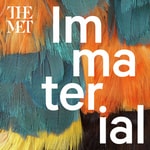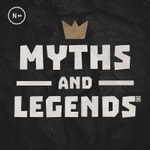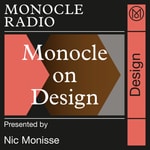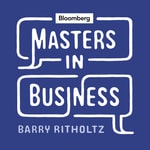Immaterial: 5,000 Years of Art, One Material at a Time – Details, episodes & analysis
Podcast details
Technical and general information from the podcast's RSS feed.

Immaterial: 5,000 Years of Art, One Material at a Time
The Met
Frequency: 1 episode/48d. Total Eps: 19

Recent rankings
Latest chart positions across Apple Podcasts and Spotify rankings.
Apple Podcasts
🇨🇦 Canada - visualArts
28/07/2025#44🇬🇧 Great Britain - visualArts
28/07/2025#33🇺🇸 USA - visualArts
28/07/2025#17🇨🇦 Canada - visualArts
27/07/2025#27🇬🇧 Great Britain - visualArts
27/07/2025#67🇺🇸 USA - visualArts
27/07/2025#16🇬🇧 Great Britain - visualArts
26/07/2025#38🇺🇸 USA - visualArts
26/07/2025#12🇫🇷 France - visualArts
26/07/2025#94🇬🇧 Great Britain - visualArts
25/07/2025#23
Spotify
No recent rankings available
Shared links between episodes and podcasts
Links found in episode descriptions and other podcasts that share them.
See allRSS feed quality and score
Technical evaluation of the podcast's RSS feed quality and structure.
See allScore global : 73%
Publication history
Monthly episode publishing history over the past years.
Wood: The Most Musical Tree in the World
Season 2 · Episode 7
mardi 27 août 2024 • Duration 41:16
How did one tree become a world-famous tonewood for guitars?
Deep in the forests of Belize, a wood importer from Florida discovered a rare tree that produced a sound unlike anything guitar virtuosos had ever heard before. But why does this material cast such a spell? And at what cost does that come?
Guests:
Ellen Ruppel Shell, journalist
Ken Parker, luthier
Reuben Forsland, luthier
Steve Cardenas, guitarist
Jennifer Anderson, historian and author of Mahogany: The Cost of Luxury in Early America
Althea SullyCole, former Fellow in The Met’s Department of Musical Instruments. Assistant Professor of Ethnomusicology in the Schulich School of Music at McGill University
Featured artwork:
Ken Parker, Archtop guitar, 2016: https://www.metmuseum.org/art/collection/search/677213
For a transcript of the episode and more information, visit metmuseum.org/immaterialwood
#MetImmaterial
Immaterial is produced by The Metropolitan Museum of Art and Magnificent Noise and hosted by Camille Dungy.
Our production staff includes Salman Ahad Khan, Ann Collins, Samantha Henig, Eric Nuzum, Emma Vecchione, Sarah Wambold, and Jamie York. Additional staff includes Julia Bordelon, Skyla Choi, Maria Kozanecka, and Rachel Smith.
Sound design by Ariana Martinez and Kristin Mueller.
Original music by Austin Fisher and Salman Ahad Khan.
Fact-checking by Mary Mathis and Claire Hyman.
Immaterial is made possible by Dasha Zhukova Niarchos. Additional support is provided by the Zodiac Fund.
Special thanks to Adwoa Gyimah-Brempong, curator Jayson Dobney, conservator Manu Frederickx, educator David Freeman, Dick Boak, Gabriela Guadalajara, and curator Alyce Englund.
See omnystudio.com/listener for privacy information.
Trash: The Archaeology of Rubbish
Season 2 · Episode 6
mardi 13 août 2024 • Duration 34:58
An archaeologist and an artist walk into a dump…
For most of us, we throw our garbage to the curb, and it disappears from our lives. But to some, that’s just the beginning of trash’s story. In this episode, we follow two people who seek the truth in trash—an archaeologist who excavates ancient rubbish in Turkmenistan and an artist who spotlights the people responsible for making trash vanish.
Guests:
Martina Rugiadi, associate curator, Department of Islamic Art, The Met
sTo Len, artist
Andy Blancero, development officer, Freshkills Park Alliance
Featured artworks:
Chakaia Booker, Raw Attraction, 2001: https://www.metmuseum.org/art/collection/search/492175
Bowl with Green, Yellow, and Brown Splashed Decoration. Excavated in Iran, Nishapur, 10th century: https://www.metmuseum.org/art/collection/search/449348
Stone Oil Lamp. Excavated in Iran, Nishapur, 9th century: https://www.metmuseum.org/art/collection/search/449328
Painted Dado Panels. Excavated in Iran, Nishapur, 9th century: https://www.metmuseum.org/art/collection/search/449862
James Hampton, The Throne of the Third Heaven of the Nations’ Millennium General Assembly, ca. 1950-1964: https://americanart.si.edu/artwork/throne-third-heaven-nations-millennium-general-assembly-9897
Fragment of a Wall Painting with a Fox or a Dog (and Painted Layers). Excavated in Iran, Nishapur, 12th century: https://www.metmuseum.org/art/collection/search/708593
For a transcript of the episode and more information, visit metmuseum.org/immaterialtrash
#MetImmaterial
Immaterial is produced by The Metropolitan Museum of Art and Magnificent Noise and hosted by Camille Dungy.
Our production staff includes Salman Ahad Khan, Ann Collins, Samantha Henig, Eric Nuzum, Emma Vecchione, Sarah Wambold, and Jamie York. Additional staff includes Julia Bordelon, Skyla Choi, Maria Kozanecka, and Rachel Smith.
Sound design by Ariana Martinez and Kristin Mueller.
Original music by Austin Fisher.
Fact-checking by Mary Mathis and Claire Hyman.
Immaterial is made possible by Dasha Zhukova Niarchos. Additional support is provided by the Zodiac Fund.
Special thanks to Adwoa Gyimah-Brempong, Avery Trufelman, Brinda Kumar, Navina Haider.
See omnystudio.com/listener for privacy information.
Metals, Part One
Season 1 · Episode 6
mercredi 17 août 2022 • Duration 56:48
Philosophers and scientists have tried for millennia to crack the code of alchemy: the art of turning lead into gold. But alchemy goes much deeper than that—it gives us a framework for turning metal into story. In the first of a two-part episode on the metals of alchemy, we explore iron, bronze, lead, and copper. Our stories go deep into the basement of The Met, and back in time to a waterlogged ancient tomb. You’ll hear about books that dazzle, puppets that weep, and the long lost sound of a 2000-year-old bell.
Guests:
Edward Hunter, armorer and conservator, Arms and Armor, The Metropolitan Museum of Art
Marco Leona, David H. Koch Scientist in Charge, Scientific Research, The Metropolitan Museum of Art
Ali Olomi, professor of Middle East, Islamic, and Global Southern history, Penn State Abington
Kannia Rifatulzia, translator, In-depth Creative
Defri Simatupang, archaeologist, North Sumatera Archaeology Center, Indonesia
Zhixin Jason Sun, Brooke Russell Astor Curator of Chinese Art, Asian Art, The Metropolitan Museum of Art
Yana Van Dyke, conservator, Paper Conservation, The Metropolitan Museum of Art
Objects featured in this episode:
European armor (various)
Zhong bells (various)
Puppet Head (Si Gale-gale), late 19th–early 20th century. Indonesia, Sumatra. Toba Batak people. Wood, copper alloy, lead alloy, water buffalo horn, paint, H. (without pull rope) 13 1/4 in. x W. 6 in. x D. 6 1/2 in. (33.7 x 15.2 x 16.5 cm). The Metropolitan Museum of Art, New York, Gift of Fred and Rita Richman, 1987 (1987.453.6)
Shahnama (Book of Kings) of Shah Tahmasp, ca. 1525–30. Opaque watercolor, ink, silver, and gold on paper. The Metropolitan Museum of Art, New York, Gift of Arthur A. Houghton Jr., 1970 (1970.301.1–78)
For a transcript of this episode and more information, visit metmuseum.org/immaterial
#MetImmaterial
Immaterial is produced by The Metropolitan Museum of Art and Magnificent Noise and hosted by Camile Dungy. This episode was produced by Adwoa Gyimah-Brempong.
Field production by Tanita Rahmani.
Special thanks to Sheila Blair, Lauren Johnson, and G. Willow Wilson.
See omnystudio.com/listener for privacy information.
Linen
Season 1 · Episode 2
mercredi 3 août 2022 • Duration 44:08
Take a spin through The Met and you’ll find thousands of items made from linen. From a 3,500 year old sheet from Ancient Egypt, to a Giorgio Armani suit from the 1980s, linen has been a symbol of wealth and authority. But it's also been a tool for the oppression and exploitation of enslaved people in the American South, and an engine of work and comfort in the Victorian era. Suit up as we undress the legacy of linen through its complex, layered symbolism.
Guests:
Catharine H. Roehrig, curator emerita, Egyptian Art, The Metropolitan Museum of Art
Rachel Tashijian, fashion critic and fashion news director, Harper’s Bazaar
Jonathan Square, The Gerald and Mary Ellen Ritter Memorial Fund Fellow, The Costume Institute, The Metropolitan Museum of Art
Cora Harrington, lingerie expert, founder of The Lingerie Addict, and author of In Intimate Detail: How to Choose, Wear, and Love Lingerie
Objects featured in this episode:
Length of Very Sheer Linen Cloth, ca. 1492–1473 B.C. Egypt, New Kingdom. Linen, Greatest length 515 cm (202 3/4 in); Greatest width 161 cm (63 3/8 in); Weight 140 grams (5 oz.); 46 warp x 30 weft per sq. cm. The Metropolitan Museum of Art, New York, Rogers Fund, 1936 (36.3.111)
Armani linen suits (various)
Nineteenth-century lingerie (various)
For a transcript of this episode and more information, visit metmuseum.org/immaterial
#MetImmaterial
Immaterial is produced by The Metropolitan Museum of Art and Magnificent Noise and hosted by Camile Dungy. This episode was produced by Eleanor Kagan.
Special thanks to Emilia Cortes, Jessica Regan, Mellissa Huber, Janina Poskrobko, Cristina Carr, Kristine Kamiya, Minsun Hwang, and Dr. Vanessa Holden.
See omnystudio.com/listener for privacy information.
Jade
Season 1 · Episode 8
mercredi 20 juillet 2022 • Duration 41:02
Deep in the riverbeds of Aotearoa New Zealand’s South Island, you’ll find a stone that’s as hard as steel and as green as the first breath of the earth. It’s called pounamu, or nephrite jade. It’s been formed into everything from adzes to earrings, including hei tiki, greenstone pendants handed down in Māori families for generations. Meet a pair of hei tiki—one with two hundred years of family history, and one that's being brought back to life in The Met. From their start as colonial institutions, you'll hear about the role museums can play in setting taonga, or treasures, free.
Guests:
Dougal Austin, senior curator, Mātauranga Māori, Te Papa Tongarewa The Museum of New Zealand
Dan Hikuroa, senior lecturer in Māori Studies, University of Auckland
Maia Nuku, Evelyn A. J. Hall and John A. Friede Associate Curator for Oceanic Art, Oceanic Art in The Michael C. Rockefeller Wing, The Metropolitan Museum of Art
Lisa Ruaka Reweti, public programs presenter, Whanganui Regional Museum
Featured object:
Greenstone pendant (hei tiki). Aotearoa New Zealand, Maori. Nephrite jade (pounamu), H. 6 1/8 in. (15.5 cm); W. 3 in. (7.6 cm); D. 1 in. (2.5 cm). The Metropolitan Museum of Art, Gift of Heber R. Bishop, 1902 (02.18.315)
For a transcript of this episode and more information, visit metmuseum.org/immaterial
#MetImmaterial
Immaterial is produced by The Metropolitan Museum of Art and Magnificent Noise and hosted by Camile Dungy. This episode was produced by Adwoa Gyimah-Brempong and Rachel Smith.
Special thanks to Chanel Clarke and Cellia Joe-Olsen.
See omnystudio.com/listener for privacy information.
Shells
Season 1 · Episode 3
mercredi 6 juillet 2022 • Duration 39:42
It all begins with a sea creature—a snail called a conch—and the mathematically perfect spiral it transforms into a home, which we humans then put to our lips and play like a trumpet. Throughout time and cultures, conch shells have been used to communicate across great distances, from signaling on the battlefield to connecting with the divine. Hear stories about a jazz musician who plays the conch to connect with his ancestors, why a sacred Incan site way up in the Andes became a ceremonial conch concert hall, and how a conch shell made its way from the depths of the ocean to echoing through the Great Hall of The Met.
Guests:
Bradley Strauchen-Scherer, curator, Musical Instruments, The Metropolitan Museum of Art
Markus Sesko, associate curator of Asian arms and armor, Arms and Armor, The Metropolitan Museum of Art
Steve Turre, master jazz trombonist and seashellist
Jim Waterman, founder and owner of Shell World
Miriam A. Kolar, scholar of archaeoacoustics and lead investigator for the Chavín de Huántar Archaeological Acoustics Project
Featured object:
Conch Shell Trumpet, late 19th century. Vanuatu, Melanesian. Conch shell, 12 x 6 in. (30.5 x 15.2 cm). The Metropolitan Museum of Art, New York, The Crosby Brown Collection of Musical Instruments, 1889 (89.4.772)
For a transcript of this episode and more information, visit metmuseum.org/immaterial
#MetImmaterial
Immaterial is produced by The Metropolitan Museum of Art and Magnificent Noise and hosted by Camile Dungy. This episode was produced by Elyse Blennerhassett.
Music in this episode performed and composed by Steve Turre, Lemon Guo, Sophia Shen, Elyse Blennerhassett, Austin Fisher, and Chris Zabriskie.
Shell recordings from Chavin provided by Miriam Kolar and performed by Miriam Kolar, Robert Silva, Ricardo Guerrero La Luna, Riemann Ramirez, Ronald San Miguel, and Tito La Rosa.
Special thanks to Tim Caster, Markus Sesko, John Guy, Maia Nuku, James Doyle, Julia Waterman, Paul Schneider, and Peter Rinaldi.
See omnystudio.com/listener for privacy information.
Clay
Season 1 · Episode 5
mercredi 22 juin 2022 • Duration 49:33
In seventeenth-century Europe, some of the wealthiest women in the world were doing something strange with the ceramic jars in their curiosity cabinets. They were eating them. But these clay pieces from Mexico—called búcaros—weren't just some bizarre snack. They were seen as a piece of the “New World,” one you could touch, smell, and taste. They were so well known that they even made it into the foreground of masterpiece paintings. But what is the real story behind these jars? Who is preserving this centuries-old ceramic tradition, and what does it mean to be one of the few artists who still works with this specific, sensuous clay?
Guests:
Fernando Jimón Melchor, master ceramics artisan from Tonalà, Mexico
Federico Carò, research scientist, Scientific Research, The Metropolitan Museum of Art
Margaret Connors McQuade, Deputy Director & Curator of Decorative Arts, The Hispanic Society Museum & Library
Ronda Kasl, curator of Latin American Art, The American Wing, The Metropolitan Museum of Art
Jorge Cañizares-Esguerra, professor and historian of science and medicine at the University of Texas
Featured object:
Covered jar (Búcaros), ca. 1675–1700. Mexico, Tonalà. Earthenware, burnished, with white paint and silver leaf, 27 3/4 in. (70.5 cm). The Metropolitan Museum of Art, New York, Sansbury-Mills Fund, 2015 (2015.45.2a, b)
For a transcript of this episode and more information, visit metmuseum.org/immaterial
#MetImmaterial
Immaterial is produced by The Metropolitan Museum of Art and Magnificent Noise and hosted by Camile Dungy. This episode was produced by Eleanor Kagan and Ariana Martinez.
Translation, photos and field production by Fernando Hernandez Becerra of Esto no es radio.
Special thanks to Marie Clapot, Monika Bincsik, Sarah Cowan, Lam Thuy Vo, and ArtShack Brooklyn.
See omnystudio.com/listener for privacy information.
Concrete
Season 1 · Episode 1
mercredi 8 juin 2022 • Duration 37:05
Concrete is full of contradictions. First it’s dust, then liquid, then hard as stone. It’s both rough and smooth, it’s modern and ancient, it can preserve history or play a hand in destroying it. Unsurprisingly, concrete is all about the gray area. Hear about this material from its supporters and detractors alike: why it’s so controversial, why it’s so often used in memorials, and how Colombian artist Doris Salcedo uses it to address grief and mourning.
Guests:
Nadine M. Orenstein, Drue Heinz Curator in Charge, Drawings and Prints, The Metropolitan Museum of Art
Abraham Thomas, Daniel Brodsky Curator of Modern Architecture, Design, and Decorative Arts, Modern and Contemporary Art, The Metropolitan Museum of Art
Adrian Forty, professor of architectural history, University College London, and author of Concrete and Culture (2012)
Marco Leona, David H. Koch Scientist in Charge, Scientific Research, The Metropolitan Museum of Art
Iria Candela, Estrellita B. Brodsky Curator of Latin American Art, Modern and Contemporary Art, The Metropolitan Museum of Art
Featured object:
Doris Salcedo (Colombian, b. 1958), Untitled, 1997–99. Wood, concrete, and steel, 32 x 15 1/4 x 16 1/2 in. (81.3 x 38.7 x 41.9 cm). The Metropolitan Museum of Art, New York, Purchase, Lila Acheson Wallace Gift and Latin American Art Initiative Gift, 2020 (2020.25)
For a transcript of this episode and more information, visit metmuseum.org/immaterial
#MetImmaterial
Immaterial is produced by The Metropolitan Museum of Art and Magnificent Noise and hosted by Camile Dungy. This episode was produced by Eleanor Kagan.
Special thanks to Doris Salcedo, Laura Ubate, the San Francisco Museum of Modern Art, the Museum of Contemporary Art in Chicago, Harvard Art Museums, and the Nasher Sculpture Center.
Audio © President and Fellows of Harvard College. Recorded by Danny Hoshino on November 2, 2016, Harvard Art Museums
See omnystudio.com/listener for privacy information.
Paper
Season 1 · Episode 4
mercredi 25 mai 2022 • Duration 38:35
Valentines, comic books, cigarette cards and more—all of these objects can be meaningful, but what does it mean to house them in a museum? Paper holds our memories, our stories, our fears, and our desires. How do conservators race against time to make them last? Enter the world of handheld ephemera, where keeping these objects in our hands or in our pockets keeps them close to our hearts.
Guests:
Taz Ahmed, author, activist, and visual artist
Rachel Mustalish, conservator, Paper Conservation, The Metropolitan Museum of Art
Nancy Rosin, valentine researcher and scholar and volunteer cataloger in the Department of Drawings and Prints, The Metropolitan Museum of Art
Allison Rudnick, associate curator, Drawings and Prints, The Metropolitan Museum of Art
Objects featured in this episode:
Omene cigarette cards (various)
Esther Howland valentines (various)
For an exclusive interview with Omene’s granddaughter, a transcript of this episode and more, visit metmuseum.org/immaterial
#MetImmaterial
Immaterial is produced by The Metropolitan Museum of Art and Magnificent Noise and hosted by Camille Dungy. This episode was produced by Adwoa Gyimah-Brempong and Eleanor Kagan.
Special thanks to Mindell Dubansky and Nadine Orenstein.
See omnystudio.com/listener for privacy information.
Introducing: Immaterial
Season 1
dimanche 8 mai 2022 • Duration 03:54
Introducing Immaterial, a brand new podcast from The Met. Hosted by poet Camille T. Dungy, Immaterial examines the materials of art and what they can reveal about history, humanity, and the world at large. Launching May 25th; new episodes publish every other Wednesday.
For a transcript and more information, please visit www.metmuseum.org/immaterial
See omnystudio.com/listener for privacy information.









